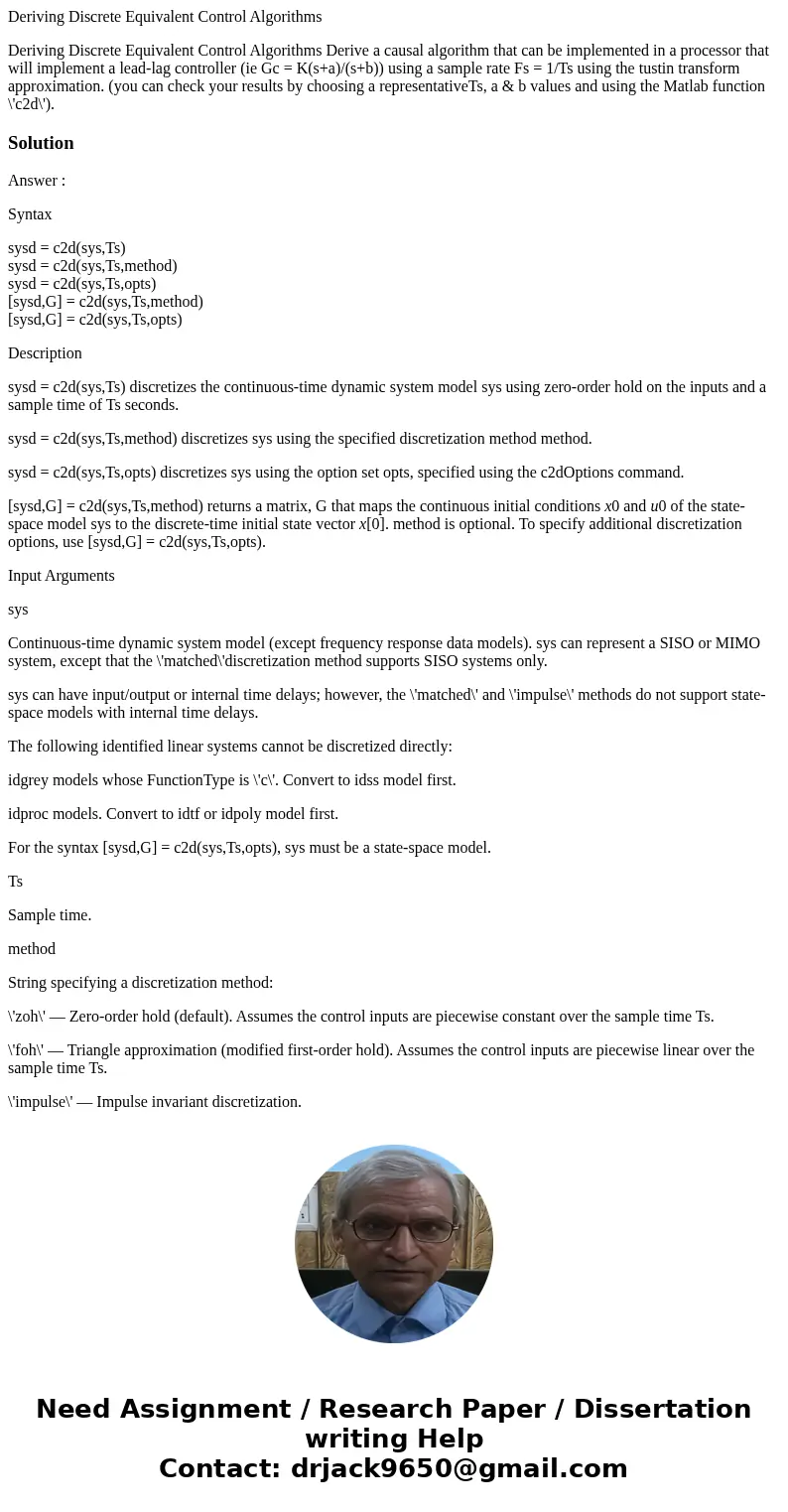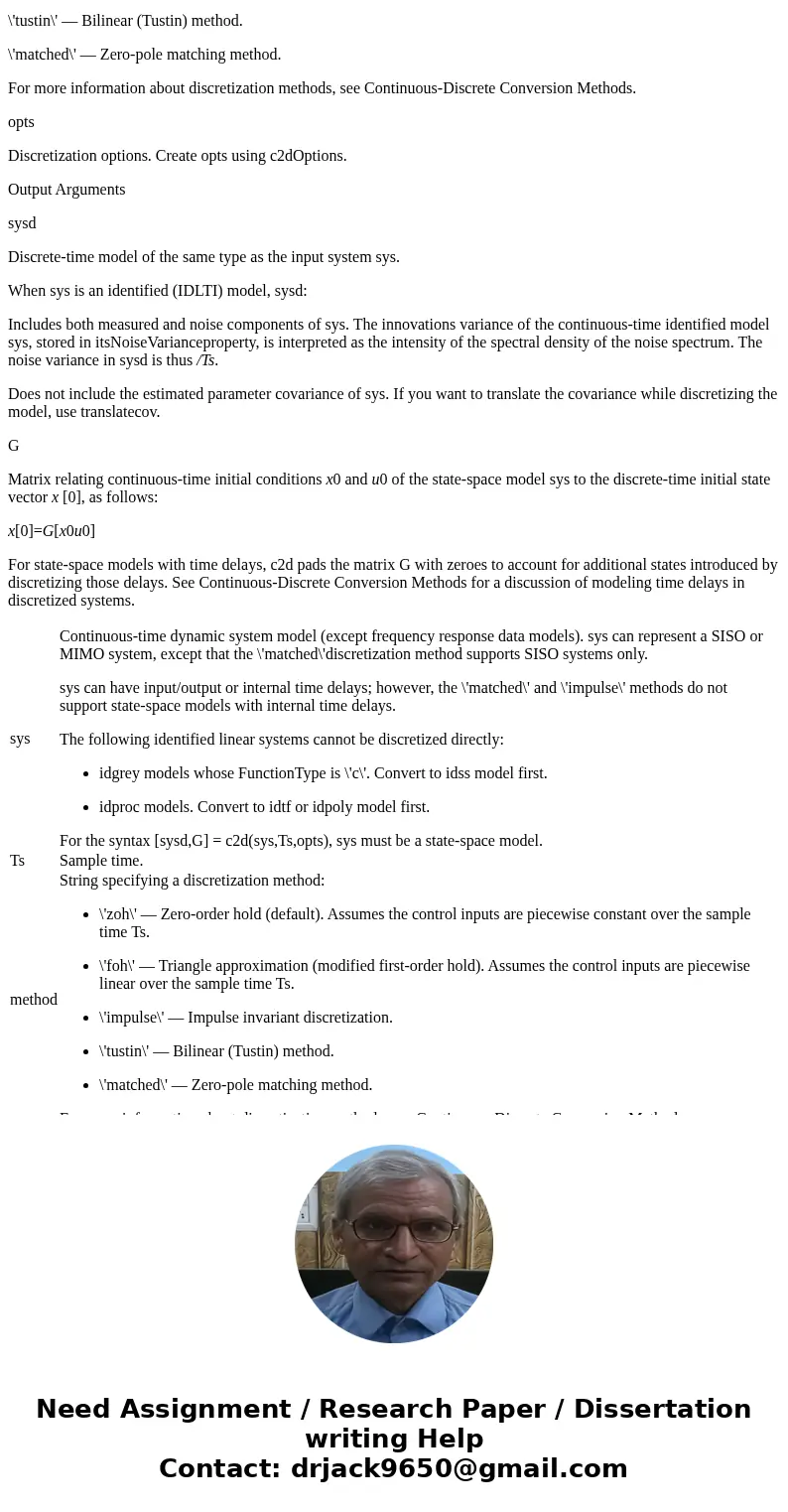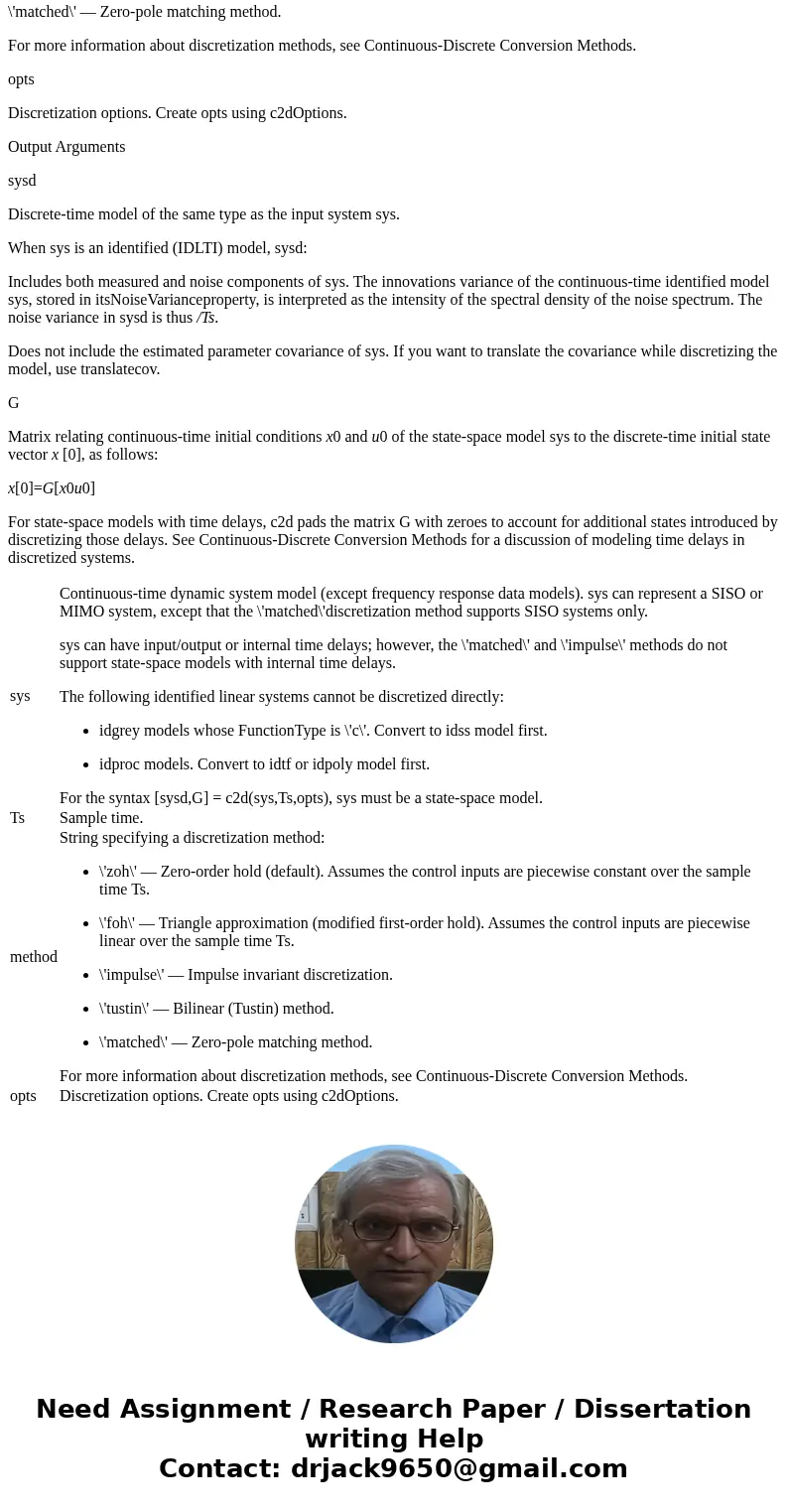Deriving Discrete Equivalent Control Algorithms Deriving Dis
Deriving Discrete Equivalent Control Algorithms
Deriving Discrete Equivalent Control Algorithms Derive a causal algorithm that can be implemented in a processor that will implement a lead-lag controller (ie Gc = K(s+a)/(s+b)) using a sample rate Fs = 1/Ts using the tustin transform approximation. (you can check your results by choosing a representativeTs, a & b values and using the Matlab function \'c2d\').Solution
Answer :
Syntax
sysd = c2d(sys,Ts)
sysd = c2d(sys,Ts,method)
sysd = c2d(sys,Ts,opts)
[sysd,G] = c2d(sys,Ts,method)
[sysd,G] = c2d(sys,Ts,opts)
Description
sysd = c2d(sys,Ts) discretizes the continuous-time dynamic system model sys using zero-order hold on the inputs and a sample time of Ts seconds.
sysd = c2d(sys,Ts,method) discretizes sys using the specified discretization method method.
sysd = c2d(sys,Ts,opts) discretizes sys using the option set opts, specified using the c2dOptions command.
[sysd,G] = c2d(sys,Ts,method) returns a matrix, G that maps the continuous initial conditions x0 and u0 of the state-space model sys to the discrete-time initial state vector x[0]. method is optional. To specify additional discretization options, use [sysd,G] = c2d(sys,Ts,opts).
Input Arguments
sys
Continuous-time dynamic system model (except frequency response data models). sys can represent a SISO or MIMO system, except that the \'matched\'discretization method supports SISO systems only.
sys can have input/output or internal time delays; however, the \'matched\' and \'impulse\' methods do not support state-space models with internal time delays.
The following identified linear systems cannot be discretized directly:
idgrey models whose FunctionType is \'c\'. Convert to idss model first.
idproc models. Convert to idtf or idpoly model first.
For the syntax [sysd,G] = c2d(sys,Ts,opts), sys must be a state-space model.
Ts
Sample time.
method
String specifying a discretization method:
\'zoh\' — Zero-order hold (default). Assumes the control inputs are piecewise constant over the sample time Ts.
\'foh\' — Triangle approximation (modified first-order hold). Assumes the control inputs are piecewise linear over the sample time Ts.
\'impulse\' — Impulse invariant discretization.
\'tustin\' — Bilinear (Tustin) method.
\'matched\' — Zero-pole matching method.
For more information about discretization methods, see Continuous-Discrete Conversion Methods.
opts
Discretization options. Create opts using c2dOptions.
Output Arguments
sysd
Discrete-time model of the same type as the input system sys.
When sys is an identified (IDLTI) model, sysd:
Includes both measured and noise components of sys. The innovations variance of the continuous-time identified model sys, stored in itsNoiseVarianceproperty, is interpreted as the intensity of the spectral density of the noise spectrum. The noise variance in sysd is thus /Ts.
Does not include the estimated parameter covariance of sys. If you want to translate the covariance while discretizing the model, use translatecov.
G
Matrix relating continuous-time initial conditions x0 and u0 of the state-space model sys to the discrete-time initial state vector x [0], as follows:
x[0]=G[x0u0]
For state-space models with time delays, c2d pads the matrix G with zeroes to account for additional states introduced by discretizing those delays. See Continuous-Discrete Conversion Methods for a discussion of modeling time delays in discretized systems.
| sys | Continuous-time dynamic system model (except frequency response data models). sys can represent a SISO or MIMO system, except that the \'matched\'discretization method supports SISO systems only. sys can have input/output or internal time delays; however, the \'matched\' and \'impulse\' methods do not support state-space models with internal time delays. The following identified linear systems cannot be discretized directly:
For the syntax [sysd,G] = c2d(sys,Ts,opts), sys must be a state-space model. |
| Ts | Sample time. |
| method | String specifying a discretization method:
For more information about discretization methods, see Continuous-Discrete Conversion Methods. |
| opts | Discretization options. Create opts using c2dOptions. |



 Homework Sourse
Homework Sourse